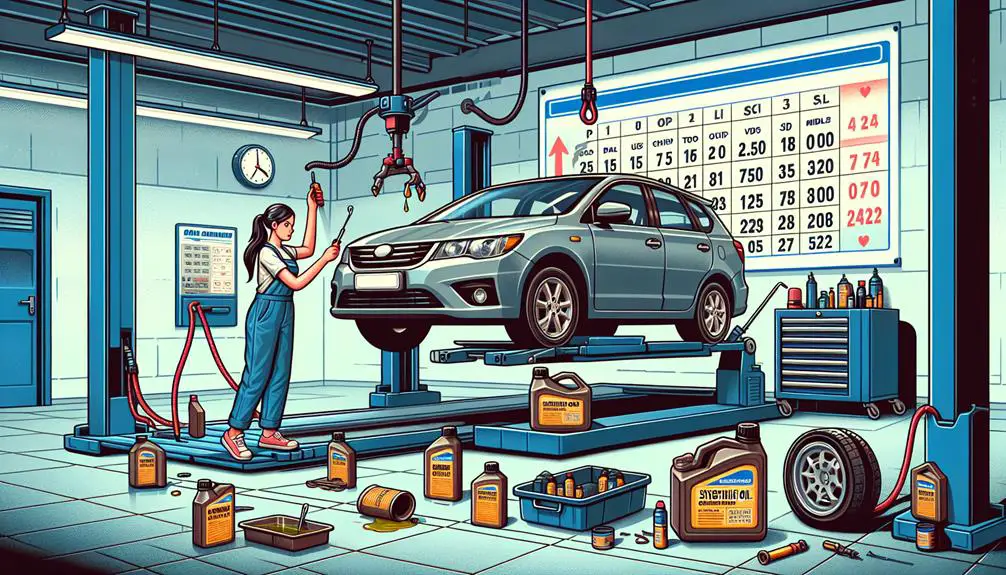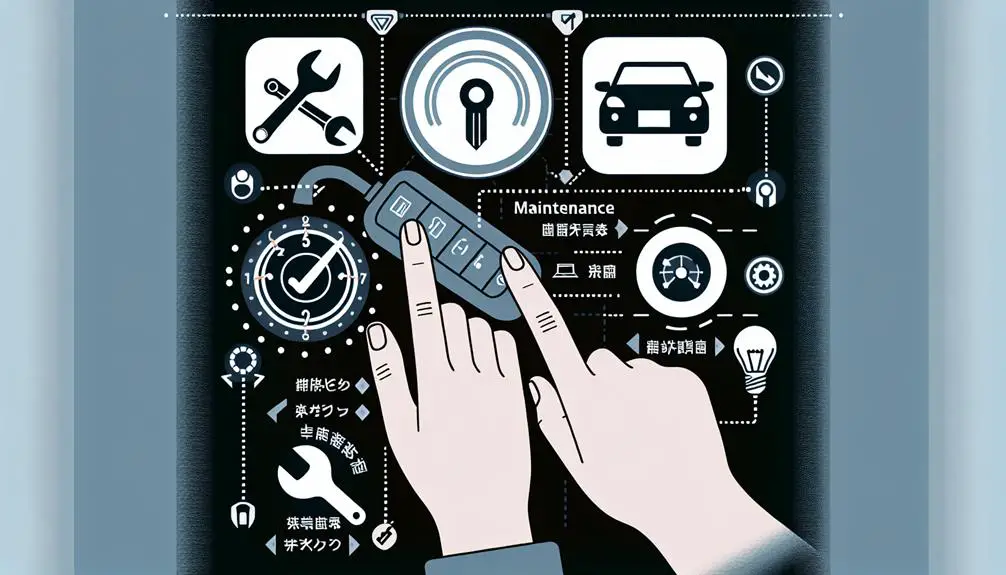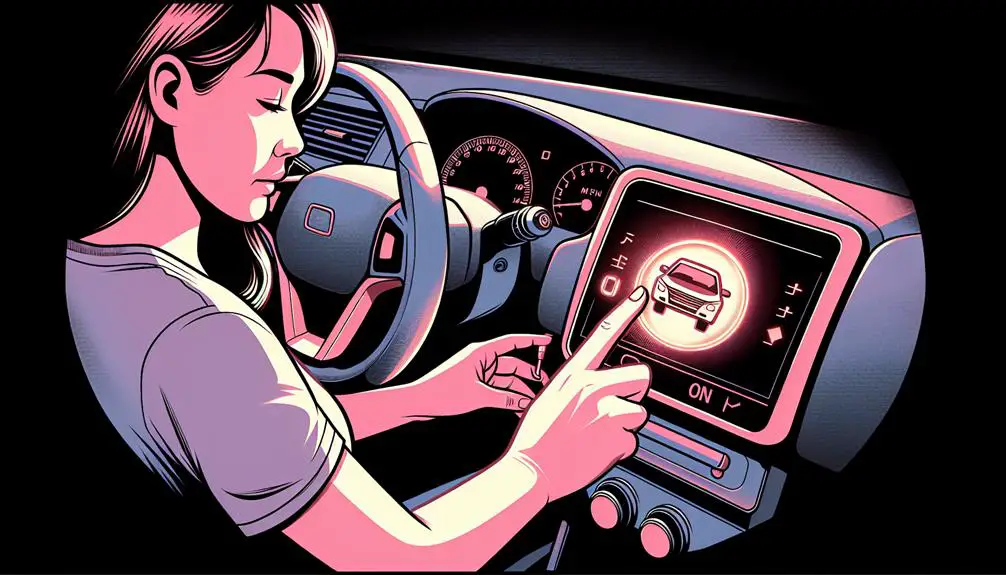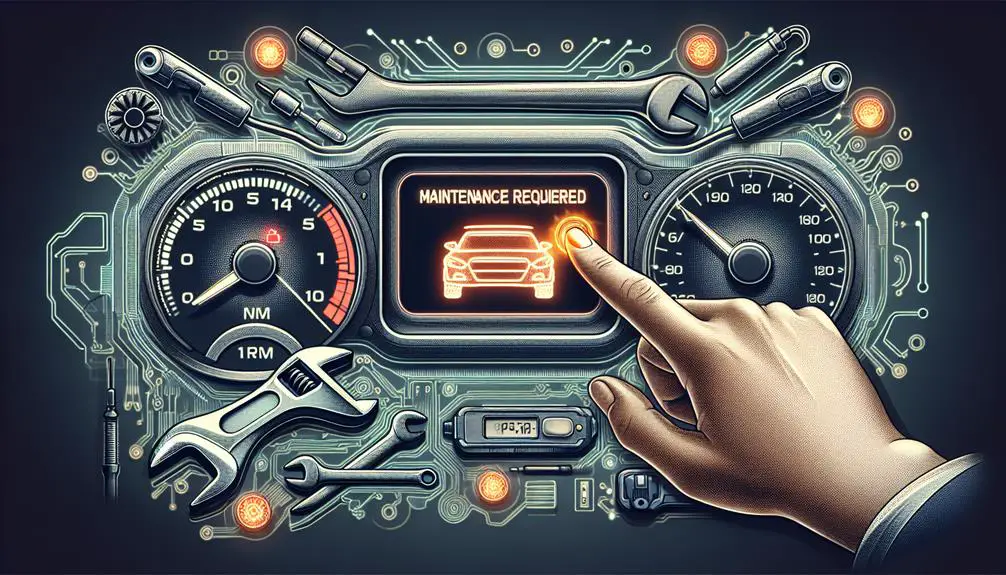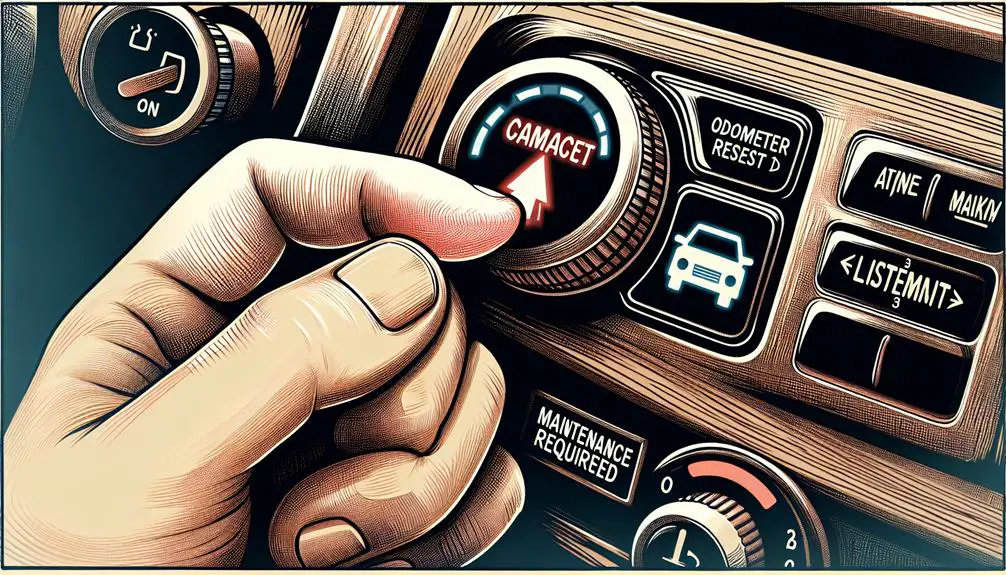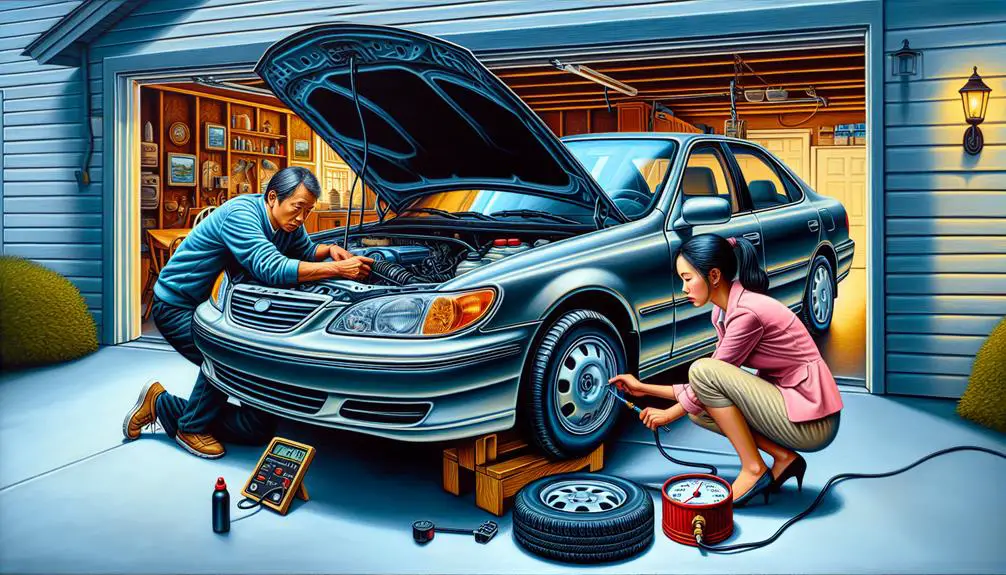Keeping your car’s tires at the right tire pressure Toyota corolla is very important. It helps your car run safely, smoothly, and efficiently. The vehicle has a special system called the Toyota corolla tire pressure monitoring system that shows you the pressure in each tire.
Discover how to easily check your Toyota Corolla’s tire pressure using the TPMS dashboard display. Our step-by-step guide covers everything from understanding warning lights to resetting the system. Keep your tires properly inflated for optimal safety, performance, and fuel efficiency.
Getting to Know the Toyota Corolla Tire Pressure Display and Monitoring System
| Model Year | TPMS Type | Display Method | Individual Tire Readout | Location of Display | Tire Pressure Alert Type | Relearn Process for New Tires | Reset Method | Sensitivity to Temperature Changes | Compatibility with Aftermarket Wheels/Tires | Battery Life for Sensors | TPMS Indicator Light Behavior |
|---|---|---|---|---|---|---|---|---|---|---|---|
| 2010 | Indirect TPMS | Warning light only | No | Instrument cluster | Warning light | N/A (uses ABS sensors) | Reset button in glove box | Low | Good compatibility | N/A | Solid light when pressure is low |
| 2015 | Direct TPMS | Warning light + pressure values | Yes | Multi-information display | Warning light + message | Manual reset required | Via infotainment system | Medium | May require sensor programming | 5-7 years | Blinks for 1 minute, then solid |
| 2020 | Direct TPMS | Multi-information display | Yes | Central infotainment screen | Warning light + pop-up message + audible alert | Automatic detection | Via infotainment system | High | Good compatibility, may need recalibration | 7-10 years | Blinks for 1 minute, then solid |
| 2024 | Direct TPMS | High-resolution display | Yes | Digital instrument cluster | Warning light + pop-up message + audible alert + smartphone app notification | Automatic detection with manual confirmation | Via infotainment system or smartphone app | Very high | Excellent compatibility with wide range of aftermarket options | 8-12 years | Customizable alert patterns |
Additional Notes:
- 2020 and later models allow toggling between PSI and Bar units.
- Spare tire monitoring was introduced in the 2018 model year.
- The 2022 model year saw an upgrade to include predictive tire wear analysis based on pressure and temperature data.
- From 2020 onwards, the user manual includes a QR code linking to video instructions for TPMS reset and understanding.
Toyota Corolla Dashboard Symbols and Meanings
You really need to know all the Toyota Corolla dashboard symbols and meanings that tell you important things about your car, including tire pressure. Here are the main ones related to tire pressure:
| Symbol | What It Means |
|---|---|
| Tire Pressure Warning Light | One or more of your tires has low pressure |
| TPMS Malfunction Light | There’s a problem with the tire pressure monitoring system |
| Tire Pressure Display | Shows the current pressure for each tire (on some models) |
These Corolla dashboard symbols are essential for understanding your car’s tire pressure status.
Checking Tire Pressure on Your Dashboard
It’s easy to check tire pressure on dashboard Toyota Corolla. Here’s how:
- Turn the key to the “ON” position without starting the engine.
- Use the buttons on your steering wheel to find the tire pressure screen on the display.
- The screen will show you the pressure for each tire.
For example, how to check tire pressure on 2017 toyota corolla involves using the arrow buttons on the steering wheel to go through the screens until you see the tire pressure.
Special Features on Newer Toyota Corollas Tire Pressure Display (2020-2024)
If you have a newer one, like a 2020 Toyota Corolla or 2022 Toyota Corolla, your tire pressure display has some cool extra features:
- It shows the exact pressure for each tire
- It uses colors to warn you if the pressure is too low or high
- You can set your own pressure warning levels
- It works with other Toyota safety features
These features make it even easier to keep an eye on your tire pressure and keep your car running safely.
How to Check Tire Pressure on Your Toyota Corolla

#Method 1: Using the Dashboard Display
As we mentioned earlier, you can use your car dashboard to check tire pressure Toyota Corolla:
- Make sure your car has been parked for at least 3 hours so the tires are cold.
- Turn the key to the “ON” position without starting the engine.
- Use the buttons on the steering wheel to find the tire pressure screen.
- Check the pressure shown for each tire and compare it to the recommended tire pressure.
- If any tire needs air, add some until it reaches the right pressure.
#Method 2: Checking Tire Pressure Manually
You can also check tire pressure on Toyota Corolla the old-fashioned way, using a tire pressure gauge:
- Take the cap off the tire’s valve stem.
- Press the gauge firmly onto the valve stem.
- Read the pressure on the gauge.
- Compare it to the tire pressure.
- Add or release air until the pressure is correct.
- Put the valve cap back on.
Do this for all four tires, and don’t forget to check the spare tire too!
Recommended Tire Pressure for Toyota Corolla
The right tire pressure for Toyota Corolla depends on the year and model. You can find the recommended pressure on a label inside the driver’s door or in your car’s manual. Here’s a general guide:
| Model Year | Recommended Tire Pressure (PSI) |
|---|---|
| 2020-2022 | 32-35 |
| 2017-2019 | 30-32 |
| 2014-2016 | 32-35 |
| 2011-2013 | 30-32 |
Always double-check your car’s label or manual to be sure you have the right tire pressure toyota corolla for your specific model.
Tire Pressure Sensor System

How TPSM Sensor System Works
The Toyota Corolla tire pressure sensor system uses special sensors inside each tire to constantly check the air pressure. These sensors send the pressure information wirelessly to a receiver in your car, which then shows the pressure on your dashboard and warns you if the pressure gets too low or high.
Where the Sensors Are Located
The tpms sensor toyota corolla are inside each tire, attached to the wheel rim. They have their own batteries and are made to last for several years. If a sensor stops working or its battery dies, a warning light will come on your dashboard to let you know.
Toyota Corolla Tire Pressure Sensor Blinking: What It Means?
If the Toyota Corolla tire pressure light blinking, it means there’s a problem with the system. This could be caused by:
| Problem | How to Fix It |
|---|---|
| Low tire pressure | Put air in the tires until they reach the recommended pressure |
| Broken or faulty sensor | Replace the bad sensor |
| Weak sensor battery | Replace the sensor |
| Interference from other devices | Move your car away from things that might be causing interference |
If the light keeps blinking after you’ve tried these fixes, take your car to a Toyota mechanic to have it checked out.
Troubleshooting Tire Pressure Problems

#1. Tire Pressure Warning Light
If the tire pressure light Toyota Corolla comes on while you’re driving, it means one or more of your tires has low pressure. Stop and check the pressure in all your tires as soon as it’s safe to do so. Add air to any low tires until they’re at the recommended pressure.
If the light stays on after you’ve added air, there might be a problem with the tire pressure monitoring system. Have a mechanic take a look to figure out what’s wrong.
#2. TPMS Malfunction Light
The Toyota Corolla exclamation point light is another warning light related to tire pressure. If this light comes on, it means there’s a problem with the tire pressure monitoring system itself, not necessarily with your tire pressure.
If you see this light, take your car to a Toyota mechanic to have the system checked and fixed.
#3. Low Tire Pressure Light
The Toyota Corolla low tire pressure light is the same as the tire pressure warning light we talked about earlier. It comes on when one or more of your tires has low pressure. Make sure to add air to your tires as soon as possible if you see this light. Driving on low tires can damage them and make your car less safe and efficient.
Keeping Your Tires at the Right Pressure
Recommended Tire Pressure Levels
To keep your vehicle running safely and smoothly, it’s important to keep your tires at the tire pressure of Toyota Corolla. You can find this level on a label inside your car’s doorframe or in the owner’s manual.
The label will usually show the recommended pressure in Toyota Corolla psi for both the front and rear tires. It might also show the pressure for the spare tire if your car has one.
Things That Can Affect Tire Pressure
There are a few things that can cause your tire air pressure for Toyota Corolla to change:
- Changes in outside temperature
- Driving fast for a long time
- Carrying heavy loads in your car
- Normal air loss over time
Keep these factors in mind and check your tire pressure regularly, especially if you’ve been driving in unusual conditions.
How Often to Check Tire Pressure
It’s a good idea to check tire pressure at least once a month, and always before going on a long trip. If you often drive in very hot or cold weather, or if you carry a lot of heavy stuff in your car, you might need to check the pressure more often.
Resetting the Toyota Corolla Tire Pressure System
When to Reset the Tire Pressure Light
You should reset tire pressure light Toyota Corolla after you’ve added air to your tires or after you’ve replaced a tire or sensor. Resetting the system makes sure it’s measuring the pressure correctly and can warn you if there’s a problem.
How to Reset the Tire Pressure Light
Here’s how to reset tire pressure light on Toyota Corolla:
- Make sure all your tires are filled to the recommended pressure.
- Turn the key to the “ON” position without starting the engine.
- Press and hold the TPMS reset button until the tire pressure light blinks three times.
- Start the engine and wait a few minutes for the system to reset tire pressure Toyota Corolla.
If the light doesn’t go off after you’ve reset it, there might be a problem with the tire pressure monitoring system. Have a mechanic check it out.
Where to Find the TPMS Reset Button
The TPMS reset button Toyota Corolla is usually located under the steering wheel, close to the hood release lever. If you can’t find where is the TPMS reset button Toyota Corolla, check your owner’s manual or ask someone at a Toyota dealership for help.
People Also Ask
How do I check the tire pressure on a 2022 Toyota Corolla?
You can check tire pressure on 2022 by looking at the tire pressure display on the dashboard or by using a tire pressure gauge to manually check each tire.
What should the tire pressure be on a Toyota Corolla?
What is the tire pressure for a Toyota Corolla depends on the year and model of the car. Check the label inside the driver’s door or the owner’s manual for the exact pressure your car needs.
How do I turn off the tire pressure light on my Toyota Corolla?
To turn off tire pressure light Toyota Corolla, make sure your tires are filled to the recommended pressure, then use the TPMS reset button to reset the system.
What PSI should my Toyota Corolla tires be at?
The Toyota Corolla tire psi your tires should be at depends on the year and model of your car. You can find the recommended PSI on a label inside the driver’s door or in the owner’s manual.
Advanced Tire Pressure Features on Toyota Corolla
Integration with Toyota Safety Sense
On some newer Corolla models, the check tire pressure monitoring system toyota works together with Toyota Safety Sense features. This means the car can use the tire pressure information to adjust things like traction control and stability control to help keep you safe on the road.
Customizing Your Tire Pressure Display
Some Corolla models let you customize the Toyota Corolla tire pressure display to your liking. For example, you might be able to:
- Set your own warning levels for low or high pressure
- Change the pressure units (PSI, BAR, KPA)
- Choose to have visual or sound alerts when the pressure is off
Check your owner’s manual or ask a Toyota dealer to learn more about the customization options for your specific Corolla model.
Wrapping Up
As you can see, keeping your Toyota Corolla tire pressure at the right level is super important for a safe, smooth, and efficient ride. By understanding how to use your car’s Toyota Corolla tire pressure display and regularly checking your tire pressure, you can avoid the problems that come with over- or under-inflated tires.
The tire pressure display makes it easy to keep an eye on your tire pressure and alerts you if something’s not right.






